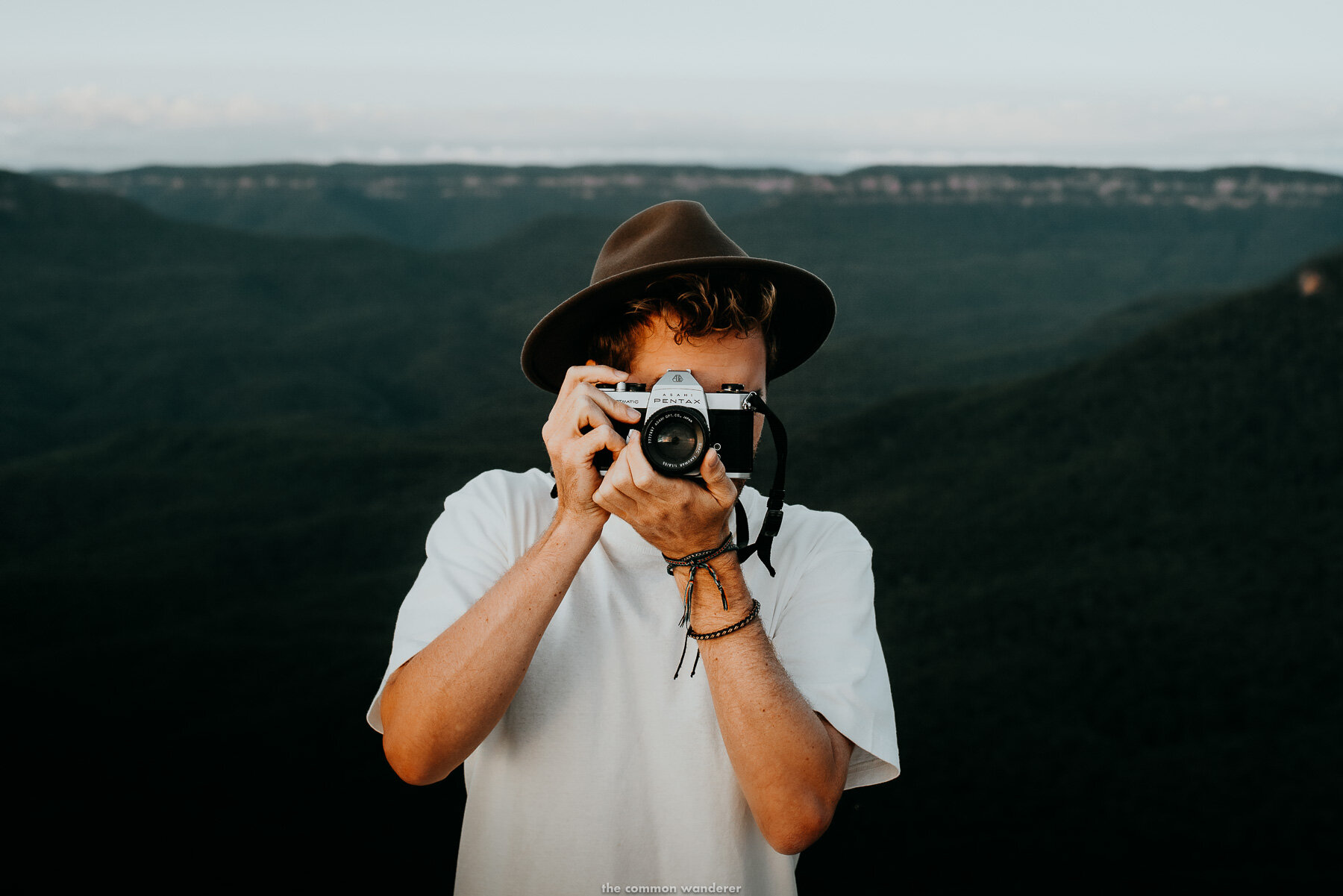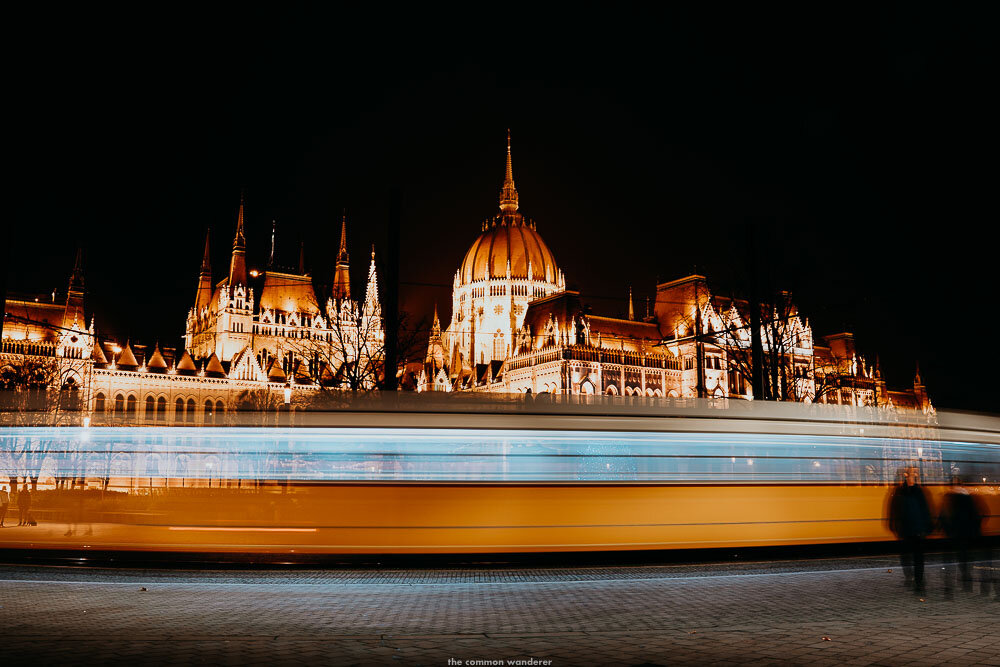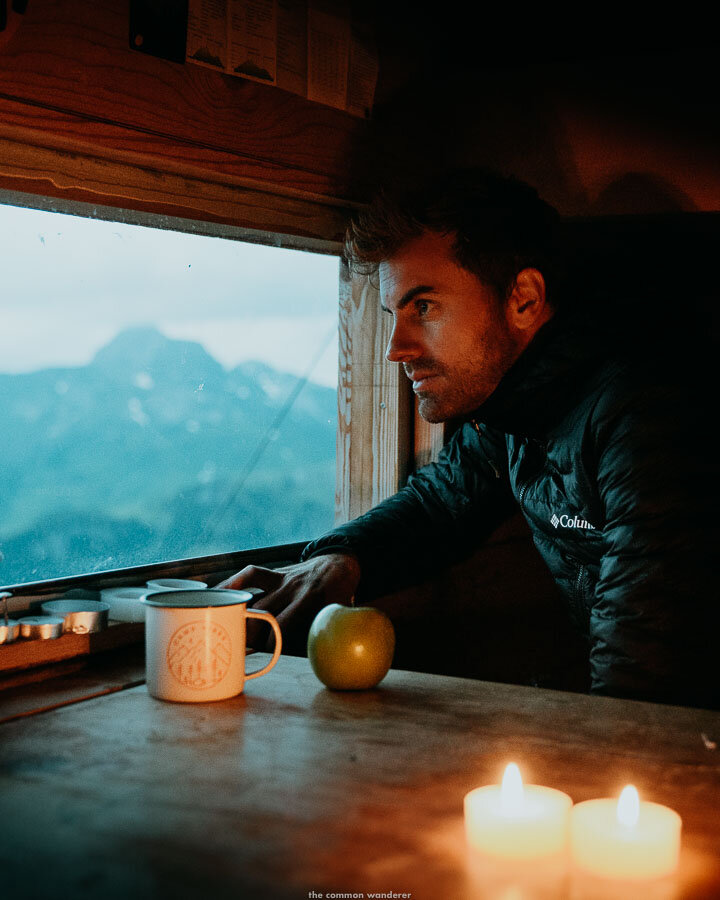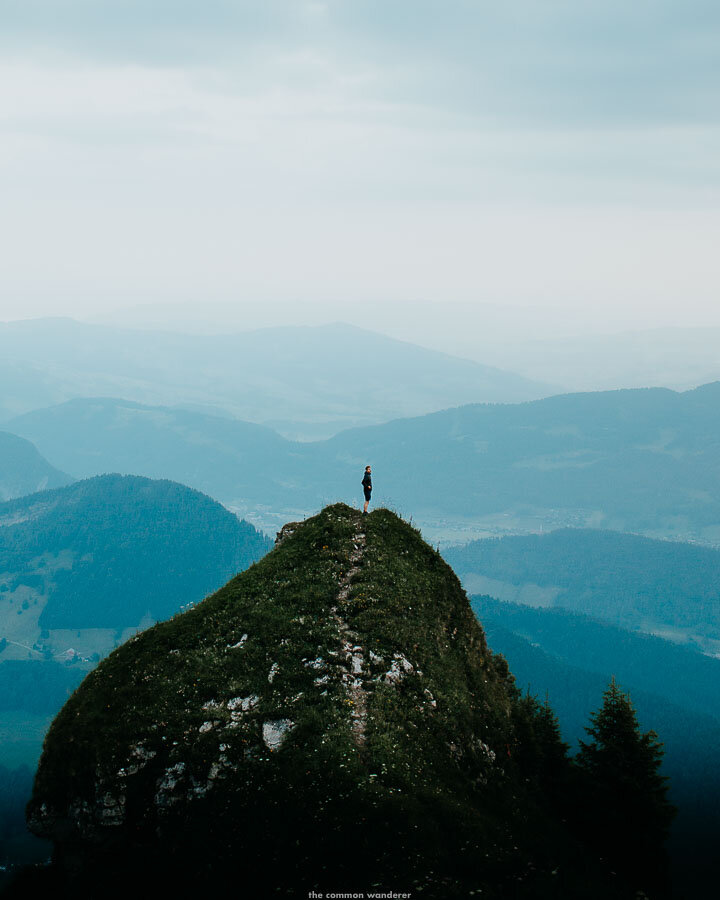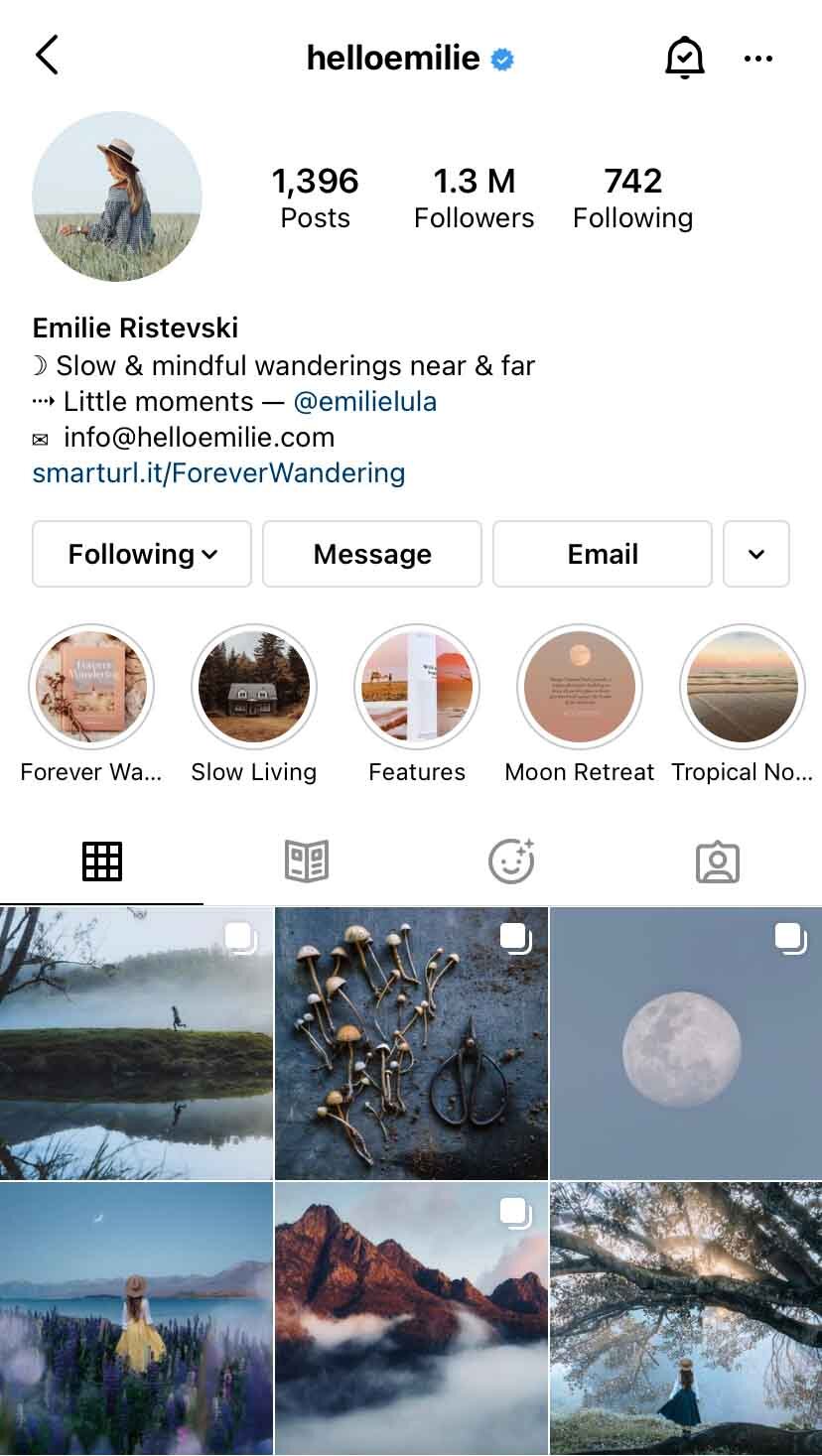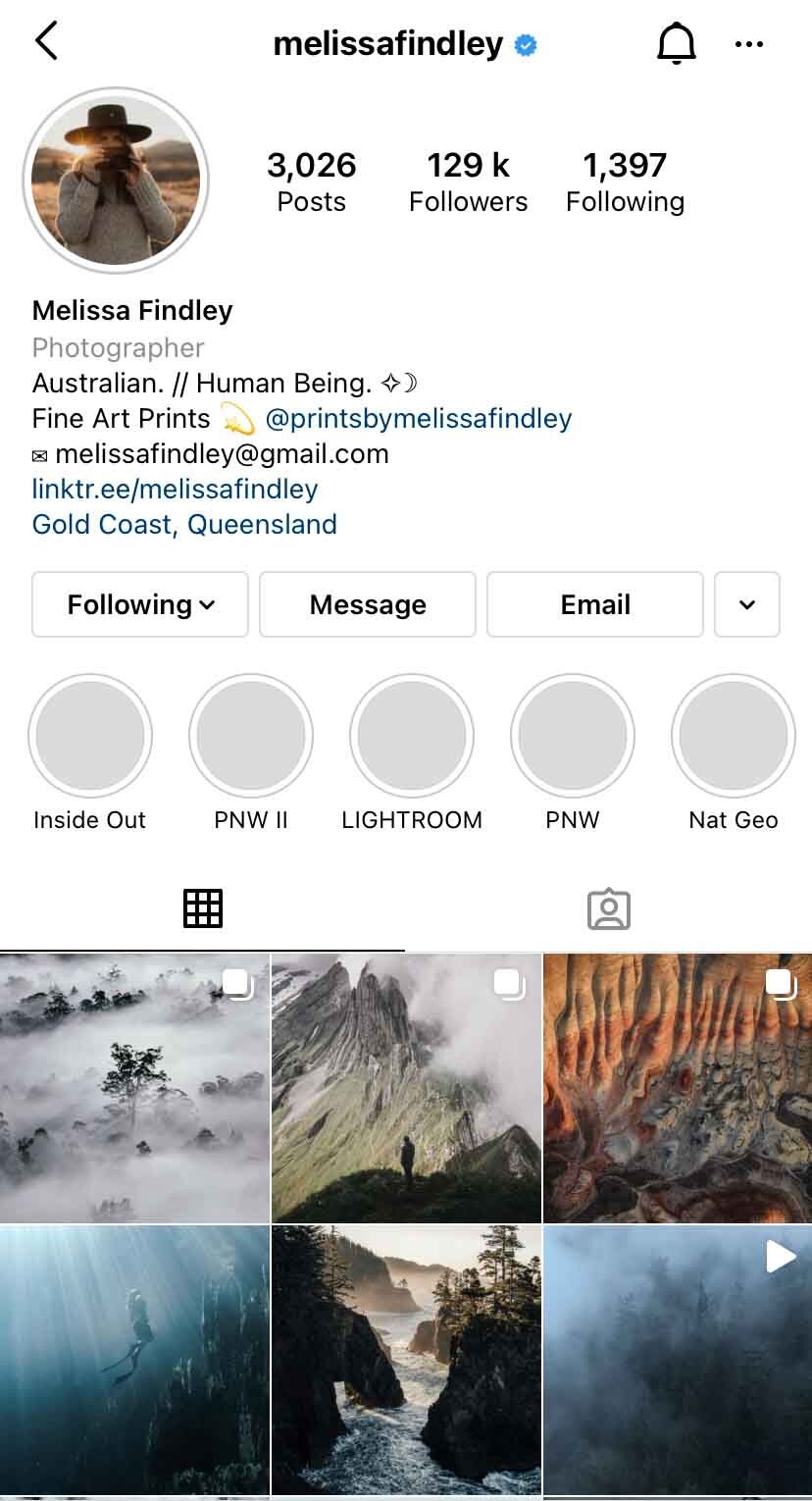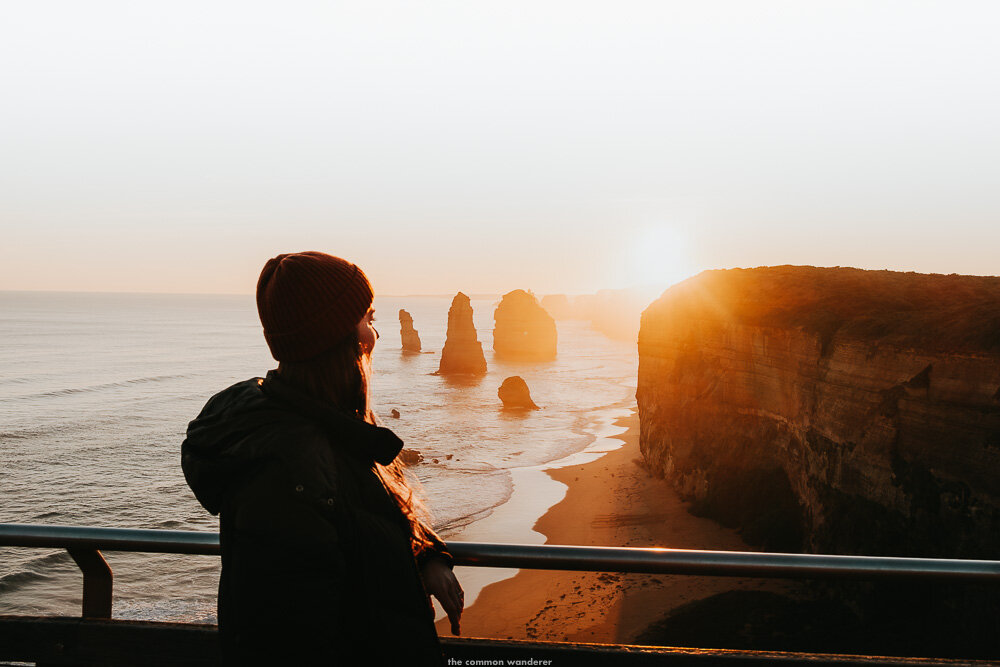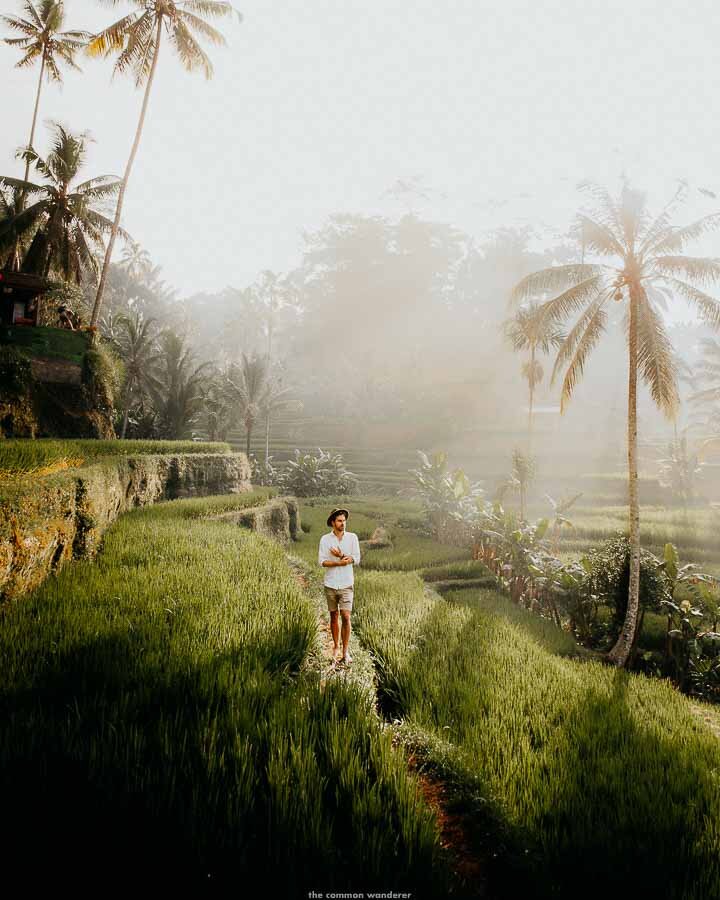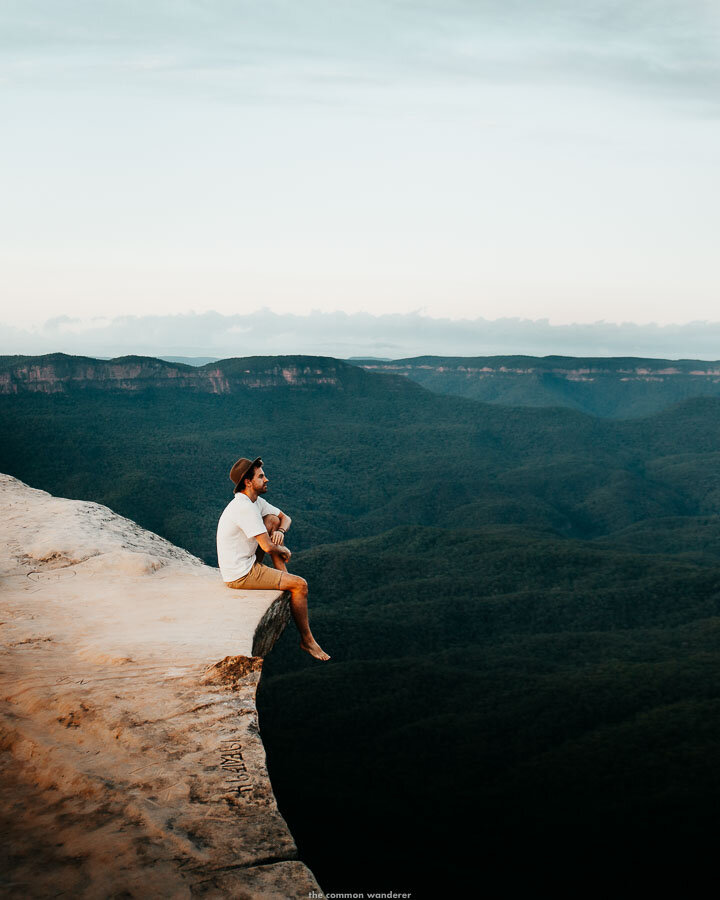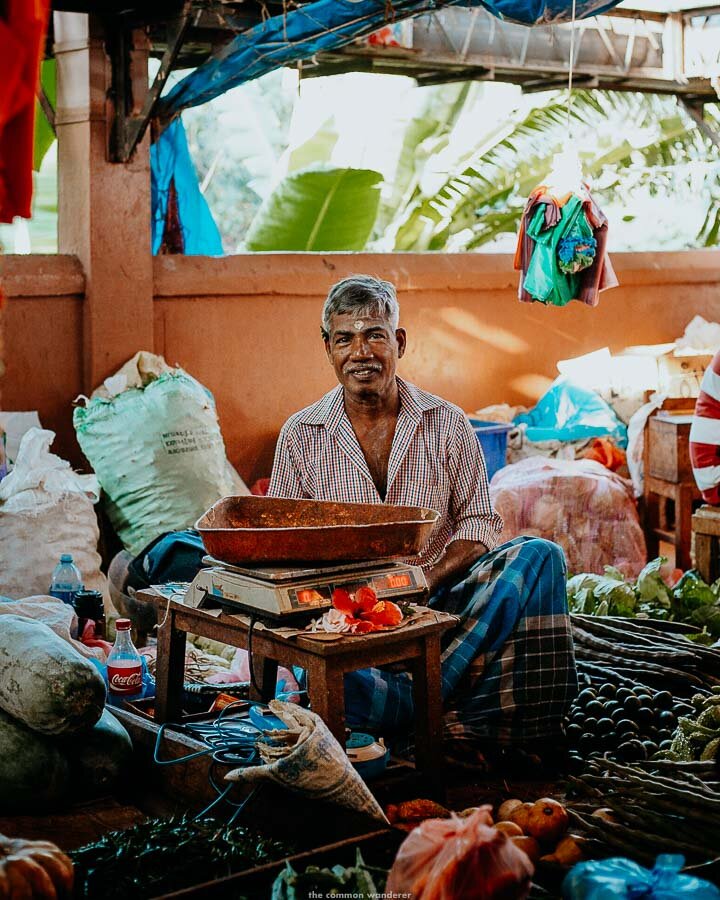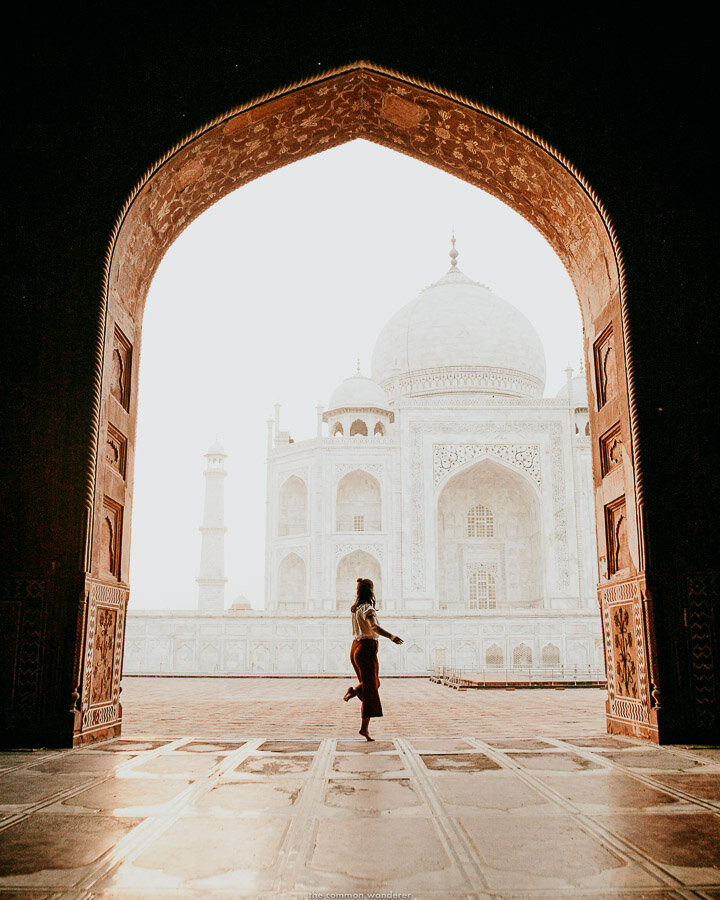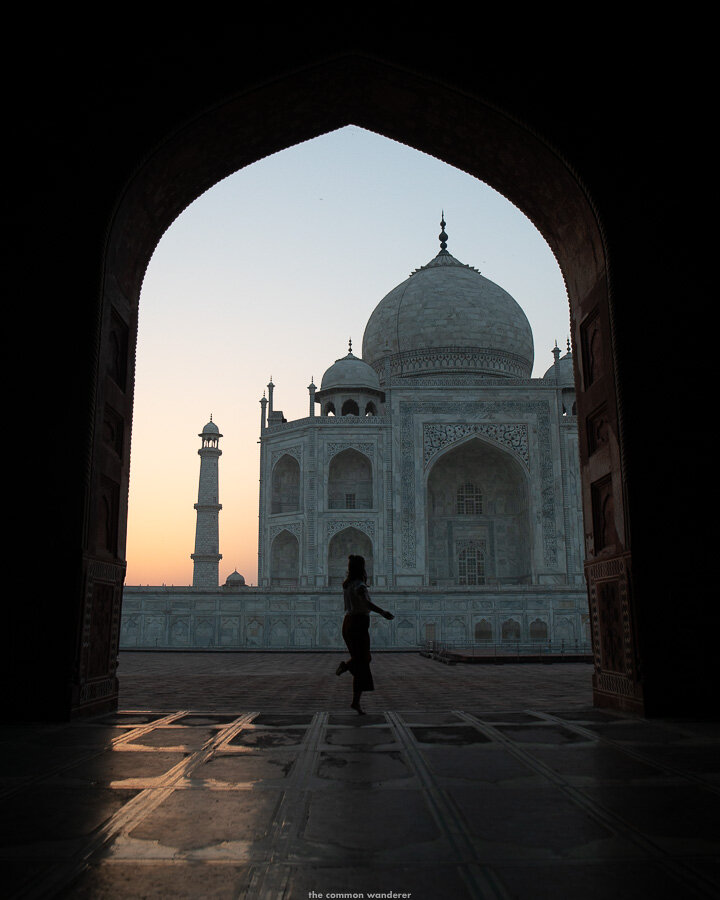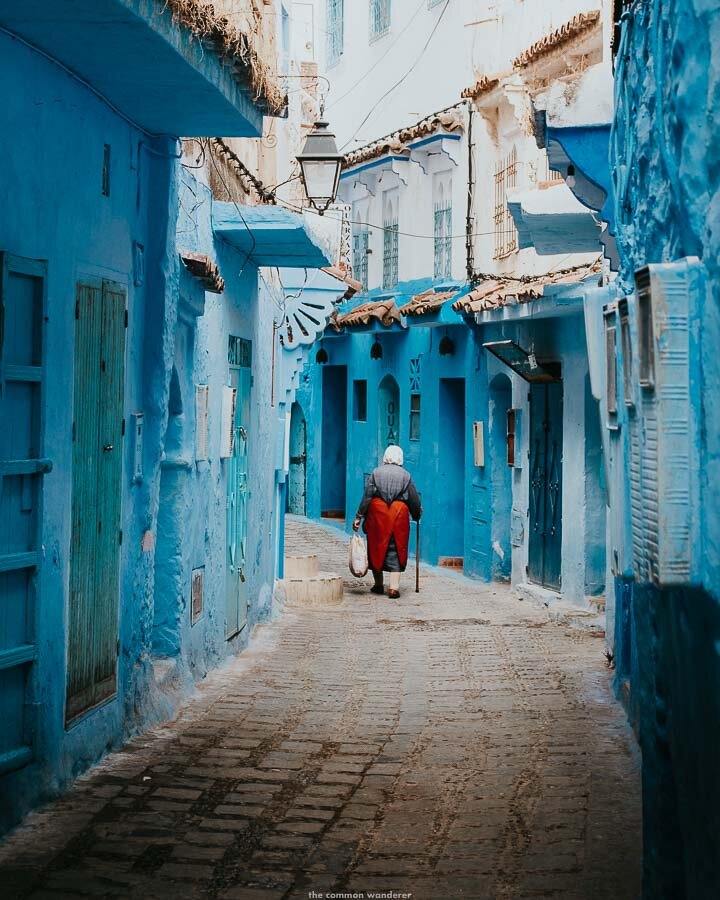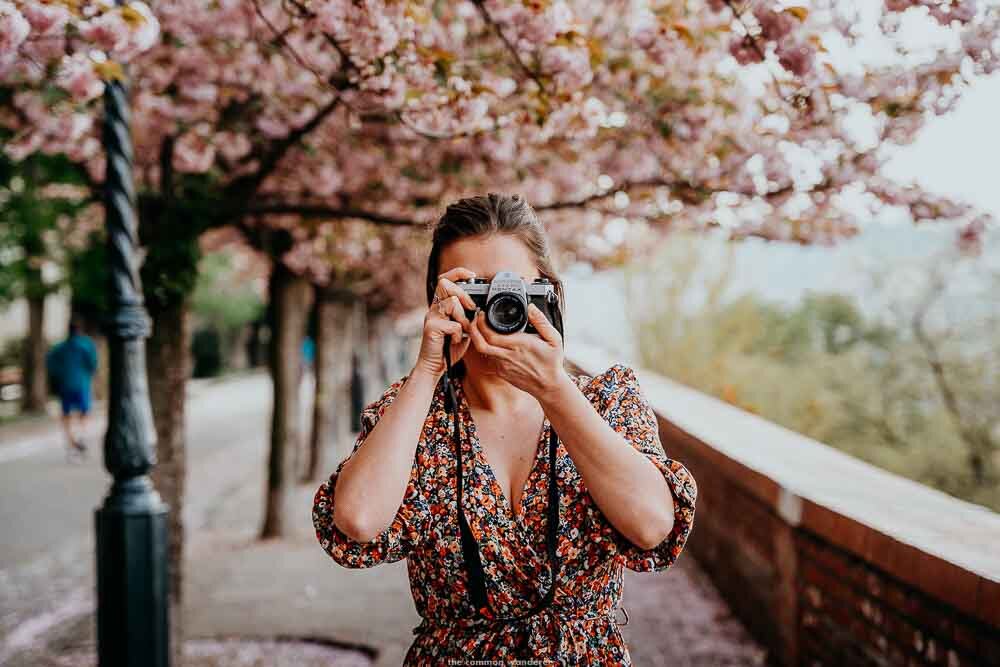Our Top Travel Photography Tips For Beginners
Improve your travel photography game with our comprehensive list of best travel photography tips for beginners. Includes tips on mastering the fundamentals, understanding your gear, and nailing your edits.
Our journey through photography isn't too dissimilar to a lot of other professional photographers we know. We discovered a passion for capturing moments after Mim picked up her very first DSLR, a Canon 70D, in 2015, and have been in love with the medium ever since.
Back then, we barely knew what we were doing - but we had a passion and we worked every single day to improve ourselves in the craft.
Fast forward five years and we now work with a number of high profile travel and lifestyle clients, photographing all manner of subjects, from portraits to landscapes, markets to monuments, and we’ve even been awarded best travel and photography blog at the UK Blog Awards.
Honestly, it’s a little insane to think where we’ve come from, and our journey is one which we feel isn't impossible for any aspiring photographers or bloggers out there.
To help you guys, we’ve put together our top travel photography tips. If you're looking to take the next step in your travel photography game, then follow our step by step guide and you’ll be photographing like a professional in no time!
HOW TO TAKE BETTER TRAVEL PHOTOS
OUR TRAVEL PHOTOGRAPHY GUIDE
THE FUNDAMENTALS OF PHOTOGRAPHY
Before diving into the deep end of travel photography, you need to learn the basic fundamentals of photography. It took us a while to nail the basics well (two years, but who’s counting), but after learning the fundamentals things just became second nature, a bit like driving a car.
Whether you've got a new camera, or an old hand me down, the basic principles of photography are the same, and we outline the key fundamentals below:
WHAT IS SHUTTER SPEED?
Probably the easiest of all camera settings to understand and manage, shutter speed is the length of time a camera shutter is open to allow light onto the camera sensor. Basically, the longer the shutter is open (slow shutter speed), the more light that gets let in, and vice versa.
During daylight there is unsurprisingly a lot of light, so you should set your camera to a fast shutter speed (or your camera will automatically adjust if shooting in Auto) as it will likely expose properly, but also freeze the action completely. Using a fast shutter is great when photographing moving objects, such as human, animals, transport etc. without motion blur.
A slow shutter speed lets more light in, which allows you to shoot in low light situations. However, if your shutter speed is too slow, the image will begin to blur if you don’t have a tripod. Slow shutter speeds (1/40 or under) also mean moving objects may be blurred, as the object you’re photographing will move in the time it takes the shutter to ‘fire’. In some cases, a slow shutter speed allows for added creativity, with movements of the subject adding intentional blur.
For the most part, you just need to remember:
Slow shutter speed = more motion blur
Fast shutter speed = no motion blur
TRAVEL PHOTOGRAPHY TIP | When travelling, use a shutter speed of 1/200+ in standard light conditions for sharp images
UNDERSTANDING APERTURE/DEPTH OF FIELD
Aperture sounds like a mathematical equation you learned in middle school, but it's actually a measure of the opening your lens makes when you take a photo, which also controls the amount of light hitting your camera’s sensor. Basically, a smaller opening = less light, while a bigger opening = more light. Simple, eh?! Not really, but once you understand aperture, you can get super creative in how you photograph
The size of your aperture is measured by a f/stop number. The higher your f/stop, the smaller the opening and the less light hitting the camera’s sensor. The lower your f/stop, the bigger the opening and more light that hits the sensor.
Aperture also controls the depth of field (DOF) in your image. Shooting with a wide-open aperture such as f/1.4 - f/4 (a shallow depth of field) lets in more light but will result in a lot of background (and foreground) blur. This is called Bokeh and is highly desirable if shooting portraits or creative scenes.
If you’re shooting with a narrow aperture such as f/9 - 16 for example, everything in your shot will be in focus- a large depth of field, but let in less light.
Aperture is generally dependant on the lens, but most standard lenses will have an f-stop range of f/4 - f/22, while 'prime' lenses generally will stop down to f/1.8 or below.
We recommend starting your photographic journey by using Aperture Priority mode on your camera. That way, you’ll control the aperture, and the camera will control the shutter speed, allowing you to get creative and play with various aperture settings, without needing to worry about the shutter speed.
TRAVEL PHOTOGRAPHY TIP | For travel, our general rule of thumb is, wide aperture for portraits (f/1.4 - f/4), narrow aperture for landscapes and city scenes (f/5.6 - f/16)
ISO
ISO is the level of sensitivity of your camera to available light. It’s essentially like a fake light, adding brightness to your image when the natural light is low. Due to this, having a high ISO (increased sensitivity) can lead to grain, or noise, to your images.
Your ISO should never be over 200 when photographing in daylight. And for the most part, it shouldn't be over 200 unless you’re photographing at night, or where light levels are low like in a cafe or alleyway.
ISO in a way should be your last resort - if you’ve made the necessary changes to shutter and aperture, and natural light levels are still too low, bump up the ISO until the scene looks well lit. For most DSLR’s, anything above 6000 ISO will start to produce grain.
For travel photography, if you’re shooting a city at night without a tripod, or in changeable light conditions, like a market, ISO can really help expose your image correctly.
TRAVEL PHOTOGRAPHY TIP | Forget about ISO unless you're inside or shooting at night. If possible, don't go above 6000 ISO.
EXPOSURE
By working with shutter speed, aperture and ISO settings (the “exposure triangle”), you’re ultimately trying to properly balance your exposure. Exposure is the brightness of your image - too overexposed and your image will be bright, too underexposed and your image will be dark.
Depending on how you adjust your settings will change the look of your image, and how you approach your shot. There will always be tradeoffs, so understanding what you want to achieve out of your photo will define which settings you use.
Here are a few common travel photography settings:
Landscape during daytime | Shutter 500, f/9, ISO 100
Portrait during daytime | Shutter 1000+, f/1.8, ISO 100
Golden hour | Shutter 200, f/4, ISO 100
Blue hour | Shutter 80, f/2.8, ISO 800
It’s worth noting that, the higher the f/stop (f/9-16), the less light that enters the camera sensor. This will generally result in a darker image, so to let more light in, the shutter speed will need to be lowered as a result. On the flip side, the higher the aperture, the more light will be let into the camera. Therefore, the shutter speed will need to increase to compensate.
To photograph wider aperture (low f-stop) in broad daylight is almost impossible, so keep those creative shots for the early-mid morning, mid-late afternoon/evening. That is unless you have an ND filter, which is for another post!
It might sound complicated, but once you understand the exposure triangle and how the three elements of exposure work together, you can start to take your travel photography to the next level.
TAKING THE NEXT STEP
PRACTICE, PRACTICE, PRACTICE
Once you've got the basics down, the next most important thing is practice. You don't need to be travelling the world full time to get some practice in; just take your camera out at every opportunity and try different things.
We’ve both found there was a correlation between our improved skills, and the time we put into photography.
Cities are often a good place to practice, as the scenes are so varied, as is the light. Practice at sunrise and sunset, adjusting your settings until you take a banger; head out at night where there’s little pollution and practice your astro game, and get your friends or family around and shoot portraits (we’re sure they’ll love it).
Once you’ve found your groove, always...
STUDY YOUR FAVOURITE PHOTOGRAPHERS/ INSTAGRAMMERS
There's not a day that goes by where we're not studying a photo by one of our favourite photographers, or Instagrammers, wondering how the hell they got some super awesome photo. Often, it's taken a lot of time, effort, technical know-how, creativity, and some killer equipment.
Study their photography and editing styles, and try to work out in your mind how that photo was taken. We never condone flat out copying, but try to take a similar photo yourself, using your knowledge of shutter speed, aperture, and a little bit of your own creativity.
Another underrated tool is the university of Youtube. Honestly, the amount of quality tutorials that exist on that platform is astounding, and we often use it to learn and evolve all parts of our photography.
RELATED | Read our post on our favourite Instagrammers who inspire us daily
FIND, AND HANG OUT WITH PHOTOGRAPHERS
Before we left Australia for our epic world over adventure, we went on a Qantas instameet with Instagram legends Jarrad Seng and Hello Emilie as well as a host of aspiring photographers. In that one session alone we learnt how to up our composition, creativity and lighting game, information which has never left us.
Since then, we've become lifelong friends with a whole host of incredibly talented photographers all around the world, and whenever we meet it's the perfect opportunity to learn and evolve our photography and editing skills.
We've found photographers to be super passionate, adventurous and generally interesting people.
We wouldn't be where we are today, with images in Condé Nast and on the front cover of books such as Wanderlust Europe without everything we've learned from them.
MASTERING COMPOSITION
Whether you use Sony A7Rii or an iPhone, composition is key. In many ways, the overall composition is subjective to the photographer, but there are a few simple rules of composition you have to follow to nail your photography game.
SHOOT DURING GOLDEN HOUR (SUNRISE & SUNSET)
Light, or more importantly, the use of light, is a key element to photography that is often overlooked.
Good light can be the difference between a good and a great photo.
Light allows you to be seriously creative, but for us, it's still a massive learning curve.
It's often not advisable to photograph in the broad midday sun as the light is harsh, and overblown and the shadows often irregular. There's a reason why a lot of the best photos you see look golden - most photographers will shoot in the morning or afternoon sun, often known as 'golden hour'.
Golden hour light is soft and perfect for photography.
The light source is also important, especially when photographing indoors. Find where the light source is coming from and place your subject (if possible) in creative positions to make the most of the light.
TRAVEL PHOTOGRAPHY TIP | Golden hour is the photography holy grail, so make the most of every sunrise and sunset
ADDING A SUBJECT
A landscape photo is cool. A landscape photo with a human element for scale is even better.
As travel photographers, our job is to inspire our audience to visit the destinations we visit or use the brands we use, so utilising a subject or human element is essential.
In this day and age, adding a human element to your travel photos provides your followers, family and or friends with the sense that they were therewith, or at the very least inspire them to follow in your footsteps.
It can also help convey a story, which is fundamentally what photography is about.
TRAVEL PHOTOGRAPHY TIP | Add a person to landscape images to provide scale, or into a cityscape to add life or tell a story
STUDY THE RULE OF THIRDS
The rule of thirds sounds like some annoying maths equation you're meant to remember from the fifth grade. It is in actual fact a simple photography rule-bound by how the composition of your photo is structured.
Simply, the rule of thirds is based on the theory that the human eye naturally gravitates to the intersection points of an image when it’s split into thirds.
The rule of thirds divides photos into thirds using imaginary lines (or, lines that exist on your camera viewfinder). Important elements of the composition (the subject) are placed on or near the intersection of the lines.
Use the rule of thirds to line up and structure your images and you’ll be taking compositionally awesome images in no time.
STRAIGHT HORIZONS
Have you ever seen a famous photo where the horizon is on some awful angle?! Nope. There's a reason for that.
Always make sure your horizon is straight, and if you have no horizon to work with...
SYMMETRY
If you get them right, symmetrical photos just work. Symmetry is the balance of one half of the image with the other, creating an almost identical mirror image. Symmetry can work in nature or in cities - reflections off water or glass/mirrors are common examples.
Always try to use straight lines. Symmetrical photos work, so line up your photo based on the lines of your subject. If it’s a tree or a building, make sure the lines are straight.
LEADING LINES & VISUAL WEIGHT
Leading lines are lines, tangible and intangible, that appear in a photograph that is framed to draw the views eye towards the subject.
Look for leading lines in your environment that draw your eye towards your subject, such as pathways, a line of trees etc. Remember The lines do not need to be straight.
Consider where you position your subject in the frame. If you think creatively and put them in different areas of the frame, you’ll potentially create something no one else has. Use the rule of thirds (see below) and think outside the square.
MASTERING YOUR GEAR
LEARN YOUR CAMERA INSIDE AND OUT
Full frame vs cropped sensor, manual vs aperture priority, continuous vs single focus - there are so many different settings on modern-day cameras that your head may explore trying to work it all out.
Don't fret though - take your time to learn every button, know and dial your camera has, and what they're used for and you'll begin to improve your photography skills rapidly.
Some of the basics are:
Shutter speed
Aperture
Iso
Focus settings (single, continuous, manual)
Focus area (centre, wide, zone, manual)
Metering modes (centre, multi)
File formats (raw or jpeg)
THE BEST CAMERA IS THE ONE YOU HAVE ON YOU
As the title suggests, the best camera you have is the one you have with you, and with the insane quality of phone cameras these days, sometimes it's all you need to take an incredible photo.
Mobile phone photography is basic but also allows you to photograph the everyday scenes - a street scene, fun with friends, something random or funny - things that might otherwise have been a memory can now be photographed.
If you only have your mobile phone, there are apps you can use to both shoot raw files, and edit your photos, such as Adobe Lightroom Mobile, and VSCO. This will not only improve your mobile phone photography but also get your images looking close to those achieved from a DSLR.
We've got a set of Lightroom Mobile presets which will make your photos look amazing, which you can check out here.
If you do have your DSLR on you, always carry it with intention - around your neck or in your hand, ready to capture any opportunities that come your way.
UNDERSTAND WHAT LENS DOES WHAT
When we first started out, we had a 15-85mm zoom lens, giving us a wide and zoom capabilities (albeit, pretty poor glass!).
After a while, we decided to invest in a 50mm prime lens to get some nice shallow depth of field portraits and street scenes. Initially, we struggled to adapt and yearned for the ability to zoom, but the more we used the 50mm, the more we understood it and the more we enjoyed it.
Same goes for our 70-200mm lens, which incidentally is our favourite lens. It took ages to get used to, and then it was absolute love.
There's a lens to suit every style of photography, from portraits to architecture, landscapes and night-scapes. For us, the versatility of zoom lenses is brilliant for travel, so we tend to utilise them more. However, we absolutely adore a 35mm focal length for street and portrait photography.
Spend some time learning each lens does (hire or borrow different ones if you need to) and you'll begin to really understand and appreciate the creative possibilities photography can give.
Here's a quick rundown of lens types:
PRIME LENSES
Ahhh, prime lenses - if we could shoot solely with primes forever, we'd be happy little photographers.
By definition, prime lenses are lenses with a fixed focal length (eg. they don’t zoom). They’re ‘faster’ than zoom lenses - meaning they’ll have a larger maximum aperture (think f/1.4 - f/2.8), which enables quicker shutter speeds (by letting in more light) and better low-light capabilities. And they're usually sharper than zoom lenses, too.
Often brilliant for portrait or street photography, a prime lens makes you think about the shot more, forcing you to be more creative and move around more.
Unfortunately, primes aren’t great for travel photography due to the lack of zoom (and sometimes the weight), but in our minds, they are an essential type of lens in any kit and some of our favourite lenses to work with.
Here are some examples of prime lenses (based on full-frame cameras only):
WIDE PRIMES
Focal ranges great for wide landscapes or cityscapes:
16mm | great for shooting indoors or architecture
24mm | perfect for shooting landscapes
STANDARD PRIMES
A typical range of lenses for portrait and street photography include:
35mm | our favourite prime lens, perfect for portraits and sometimes landscapes
50mm | similar to what the human eye sees, and therefore an essential lens in any kit
85mm | a portrait lens which can isolate the subject from the surroundings and background
135mm | a prime 'zoom' lens that is also incredible for portraits (taken far away of course)
TRAVEL PHOTOGRAPHY TIP | Prime lenses are sharp, fast and create incredible bokeh, but are generally heavy. Pick one for travel photography and be done with (our pick is the 35mm)
ZOOM LENSES
A zoom lens is a 'must-have' in any travel photography kit.
A zoom lens is pretty self-explanatory - it basically allows the focal length of a lens to be extended. Zoom lenses offer more focal length and flexibility than prime lenses, thus making them far better for travel photography, especially if space is an issue.
Zoom lenses will typically have an aperture of f/4 (unless you're buying proper glass which can be expensive), meaning they’re not as ‘fast’ as primes, but depending on the quality of the lens, you should still be able to take creative, low depth of field photos. They’re also known to be a little less sharp, which again only affects cheaper lenses.
But for us, we just love a high-quality zoom in our camera bags.
Typical zoom lenses include (based on full-frame cameras only):
16-35mm | super-wide zoom lens which is a great lens for city shooting and vlogging
24-70mm | the holy grail of zoom lenses, wide enough for landscape and cropped enough for portraiture
70-200mm | a beautiful beast used for wildlife, or compressing the background. Our favourite lens
Learn more about our gear and what’s in our camera bag here.
TRAVEL PHOTOGRAPHY TIP | Zoom lenses are the most versatile option for travel photography
Achieving compression using the 70-200mm lens in Nepal
FOCAL LENGTH
Focal length measures the distance, in millimetres, between the centre of the lens and the camera's sensor. All you really need lens focal length numbers mean, depending on what type of camera you have - either a full-frame or cropped sensor.
Full frame cameras will give you the true mm of the lens. Anything with a smaller sensor is called a crop sensor and will give you a cropped in the version of the lens’ true mm.
For example:
Sony A7iii Full frame = 1:1
Fuji X-T3 Crop Sensor = 1.7:1
Basically, if you use a 35mm on a full-frame, you'll get a 35mm focal length, however on a cropped sensor it'll be close to a 50mm focal length (achieved by multiplying 35 x 1.7 to get the mm of the lens). Therefore a 35mm lens on a Fuji X-T3 actually looks like a 50mm focal length.
Keep this in mind when buying a camera or lens - but for the most part, a full-frame camera will have a larger sensor and retain more data, producing sharper, larger photos.
REMEMBER YOUR TRIPOD
We used to hate carrying around our tripod until we started using it creatively to achieve a whole range of photos. Now, it's an essential part of our travel photography kit.
A tripod allows your camera to be fixed in a position, providing stability for shooting slower shutter speeds for long exposure photos such as astrophotography, anything low light, and waterfalls) without worry about camera shake.
They're also super handy for shooting self-portraits (travel couple tip 101!) and time-lapses for video projects.
EDITING YOUR PHOTOS
Editing is one of the most important aspects of photography, as it is where your photos really come to life (especially if you shoot in raw!).
The most common editing software for professional photographers is Adobe Lightroom and Photoshop (sign up to Adobe Creative Cloud here!).
ALWAYS SHOOT IN RAW
What is raw we hear you say? RAW is a file format that captures all image data recorded by the sensor when you take a photo. Basically, it's not compressed like a jpeg is, so no data is lost. This gives the highest quality files
This is super helpful when editing your photos in post, as you can manipulate your image to recover exposure, contrast, highlights, or shadows without a reduction in the quality of the image.
If you want to take your travel photography to the next level, shooting raw is the best place to start. Once you've done that, you'll need to learn how to edit...
LIGHTROOM AND PHOTOSHOP
When we edit, we try to convey a certain feeling or look that we experienced in the destination.
The colours, energy, and experience all work together to become the final edit. For instance, our trip through India was filled with colours and vibrancy, and our edited images, in turn, were warm, colourful, contrasty and brought the sights, sounds and smells to life.
A few key things to consider when editing:
Learn the intricate details of Lightroom and Photoshop. Even to this day, we're finding new ways to improve our editing
Practice on all different types of photos and settings
Use presets to speed up your workflow
Keep it subtle and don't overdo it - especially with saturation
Build up your own style over time
We have a love-hate relationship with editing in Lightroom - we love seeing our images come to life, but the process can be arduous, trying to achieve a look and aesthetic that you love.
It's for this reason we created our custom Lightroom presets, to speed up our workflow and create a signature look and aesthetic to our images. They're a great starting point for anyone starting out, as they'll make your photos pop with colour and contrast, perfect for travel photography.
If you'd like to purchase our preset packs, click the link below!
RELATED | How to edit using Lightroom, What are Lightroom Presets?
CONSIDER COLOUR THEORY
Utilising colour theory can help take your editing to the next level. But what is colour theory?
Colour theory is an editing process that combines specific colours in a way that complement each other. A colour wheel is a great way to help you determine which colours look good together.
For example, turquoise and orange are complementary colours, and always work well together (that's why Mediterranean shots are amazing!). Green and red also work well together, so consider a red jacket amongst a green rainforest.
While know colour theory isn't essential, it can add a layer of cool to your travel photos.
HAVE FUN
Photography should be fun. Sure, it can be a struggle to learn the basics, but even with an iPhone, you can have a lot of fun photographing your travels.
Next time you’re off on an adventure, think about the basics above and take your photography game to the next level.
PHOTOGRAPHY TIPS, DIARIES + INSPIRATION
PHOTOGRAPHY | Love our photography? Wondering what gear we use to get all of our photos around the world? Click here to view our detailed photography gear guide, as well as our top travel photography tips!
LIGHTROOM PRESETS | Our in-depth guide to Lightroom Presets
SRI LANKA | 70 Incredible photos to inspire your Sri Lankan travels
FAROE ISLANDS | Explore the Faroe Islands through our photography
NAMIBIA | A journey through barren lands
BOLOGNA | A photographic tour of Italy’s red city
SWEDISH LAPLAND | 25 incredible photos that will ignite your wanderlust
BE INSPIRED | A photo journey through Sossusvlei, Namibia
NEPAL PHOTOGRAPHY INSPIRATION | 30 photos that will inspire you to visit Nepal
TRAVEL INSURANCE | Don’t leave home without travel insurance (seriously, don’t!). Click here to get the best deals with World Nomads, our trusted travel insurance provider
Did you find our travel photography for beginners guide useful? Let us know if you've got any further travel photography tips or hacks!
FIND MORE PHOTOGRAPHY INSPIRATION HERE
Disclaimer: Some of the above links are affiliate links.
If you choose to purchase using the above buttons we receive a small commission at no extra cost to you. Please know that by using these affiliate links, you’re directly supporting The Common Wanderer to stay wandering. If you use our affiliate codes, you’re officially a legend.

